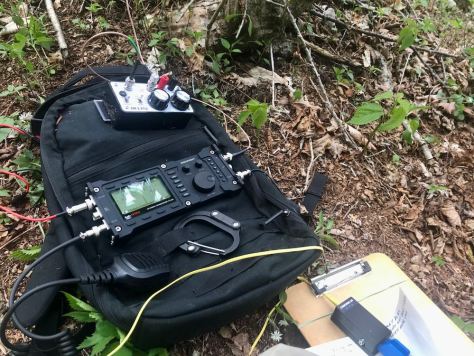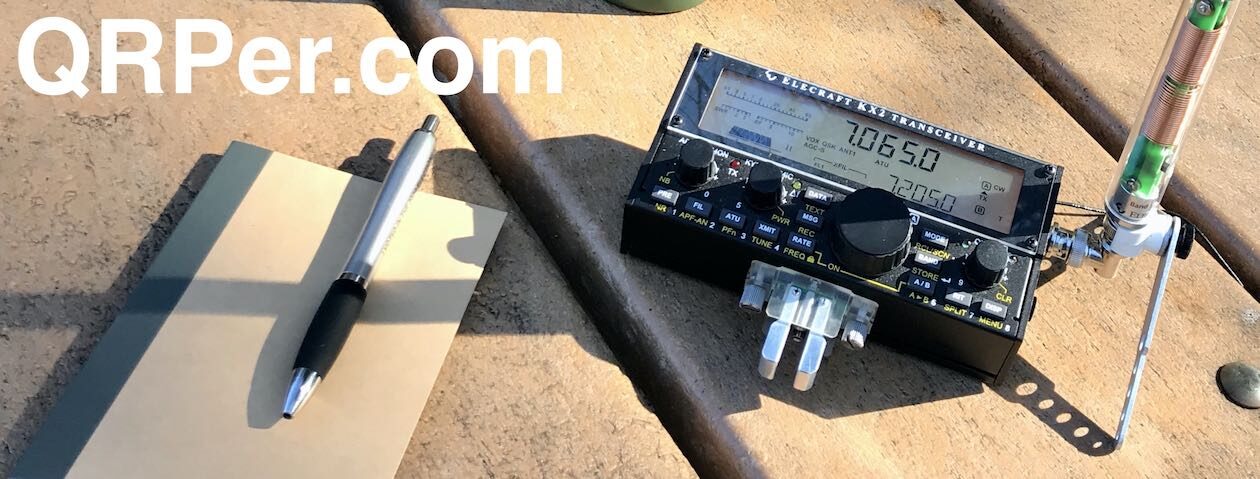 Lately, I’ve had quite the backlog of reviews and evaluations building up. Family life has been active–and it always comes first–but also I’ve a number of projects on the table (two kit builds, one repair, two antenna projects), four articles for various publications, two new transceivers (the TX-500 and now an X5105 on loan), and a number of family business projects. ‘Tis the season, I reckon.
Lately, I’ve had quite the backlog of reviews and evaluations building up. Family life has been active–and it always comes first–but also I’ve a number of projects on the table (two kit builds, one repair, two antenna projects), four articles for various publications, two new transceivers (the TX-500 and now an X5105 on loan), and a number of family business projects. ‘Tis the season, I reckon.
Normally, I’d be in Dayton, Ohio right now enjoying a weekend of fellowship and Hamvention/FDIM insanity, but all that was cancelled this year due to the pandemic.
I’ve had a number of projects that sort of force me indoors, but I haven’t felt like doing them. Spring in the mountains of western North Carolina is truly a thing to enjoy (save the allergies)–and it’s an incredible distraction.
On Saturday afternoon, May 8, 2021, my whole family wanted a little outdoor distraction time, so we hopped in the car and drove to a nearby spot in Pisgah National Forest.
The drive takes nearly 50 minutes even though the actual site isn’t even 5 miles from the QTH as the crow flies. The weather was beautiful, but a front was moving through bringing strong wind gusts.
I had planned to set up my activation next to our car along the forest service road, but to shelter myself from some of the winds, I decided instead to set up next to the nearby creek, down the hill a bit.
This particular site is actually located in both Pisgah National Forest and Pisgah Game Land–they overlap, which makes this a Parks On The Air “Two-Fer”.
Equipment
- lab599 Discovery TX-500
- Packtenna 9:1 UNUN Random Wire Antenna
- Emtech ZM-2
- CW Morse “Pocket Paddle”
- GoRuck Bullet Ruck
- Bioenno 3 aH LiFePo Battery (Model BLF-1203AB)
- Arborist throw line
- Tom Bihn Large Travel Tray
- Rite In The Rain Weatherproof Cover/Pouch (affiliate link)
- Muji A6 Notepad (affiliate link)
While setting up next to a creek makes for a beautiful little activation spot, it also adds a lot of extra background noise. Normally, I would have used some in-ear earphones with the TX-500 for sound isolation, but (after twenty minutes on the air and against my better judgement) I decided to make an activation video at this site, so used the speaker/mic instead.
I’ve activated this site numerous times in the past and while it has tall trees and loads of spots to set up, it’s also in a pretty deep ravine, surrounded by tall ridge lines. While this is less a problem with HF as it would certainly be for line-of-site frequencies, history has proven that it makes for a challenging activation.
I deployed my new PackTenna 9:1 UNUN random wire antenna as a vertical. I’m glad I chose the PackTenna because it’s such a low-profile antenna, I knew it would be less affected by the strong wind gusts.
I also decided to employ my Emtech ZM-2 manual antenna tuner during this activation. Why? Because I had never used it with the PackTenna before. So why not?
On The Air
 I hopped on 40 meters and started calling CQ. Thankfully, the Reverse Beacon Network found me and the POTA website automatically created a spot from the RBN information.
I hopped on 40 meters and started calling CQ. Thankfully, the Reverse Beacon Network found me and the POTA website automatically created a spot from the RBN information.
I worked four stations in four minutes! This was a much better start than I’d ever had at this site before.
Then, nothing…
About 20 minutes passed as I called CQ on 40 meters. This was going to be a challenging activation after all.
I decided to move up to the 30 meter band. I thought there might be some value in showing how to tune the ZM-2, so I started recording one of my real-time, real-life activation videos knowing that the audio might not be ideal with the rushing creek.
On 30 meters, I was able to pick up three more contacts in fairly short order, giving me a total of seven contacts. Only three more needed to validate my activation!
At least 20 minutes had passed since I was on 40 meters, so I decided to hop back down there hoping some new hunters might be monitoring the POTA spots.
Sure enough, I was able to add five more contacts in ten minutes!

I likely spent a total of one hour on the air. By the time it was over, my wife and daughters were ready to hit the road again: temps had dropped pretty quickly in that one hour time frame and the gusts were strong enough my wife was concerned it could knock some branches loose. (I was less concerned because I always check a site for widow-makers and power lines before setting up.
Video
Here’s my real-time, real-life activation video starting about 20 minutes into the activation:
With such a simple radio kit, packing up was very quick.
This was my second activation with the new TX-500. I really do love this radio.
A number of folks noted in my last TX-500 video that there was an audio pop present as I keyed the radio either with my paddles or with the built-in memory keyer. I had never noticed this before, but I think I know why it’s happening. In my videos, I crank the speaker/mic volume up all the way so the audio can be heard. When I do this, the T/R relay audio pop/recovery is quite noticeable.
I think I may slow the relay recovery to something like 400ms so the audio doesn’t try recovering between characters. The TX-500 isn’t capable of full break-in QSK anyway, so there’s really no need for a 100ms recovery. I’ll also share this feedback with the engineers at lab599 as I suspect this can be sorted out in firmware. In the shack, it’s not an issue because audio levels are in the normal range, but in the field when the audio is cranked up, it’s pronounced. This also would not be an issue if using earphones, of course.
I do love this TX-500 and am very happy I’ve officially purchased it from lab599 and added it to my transceiver arsenal! Now to give it a name and make it official…
Do you enjoy QRPer?
Please consider supporting us via Patreon or our Coffee Fund!
Your support makes articles like this one possible. Thank you!






Great post again Thomas.
That ZM-2 tuner – it’s a funny one. I’ve been playing with a new unit recently and hooking up random-wires. So far it’s been rare that i’m able to extinguish the indicator LED completely, but even when the LED is barely lit, my transceiver usually shows no SWR present.
I know you like the ABR brand of cables – but what’s the spec for the ones you’re using? So nice and slim!
I have a 20+ year old ZM2, for which I recently bought a replacement poly cap. The problem is, now I can’t find the ZM2!
Nice to see your hand has healed, Thomas.